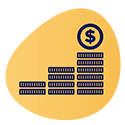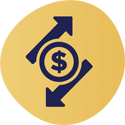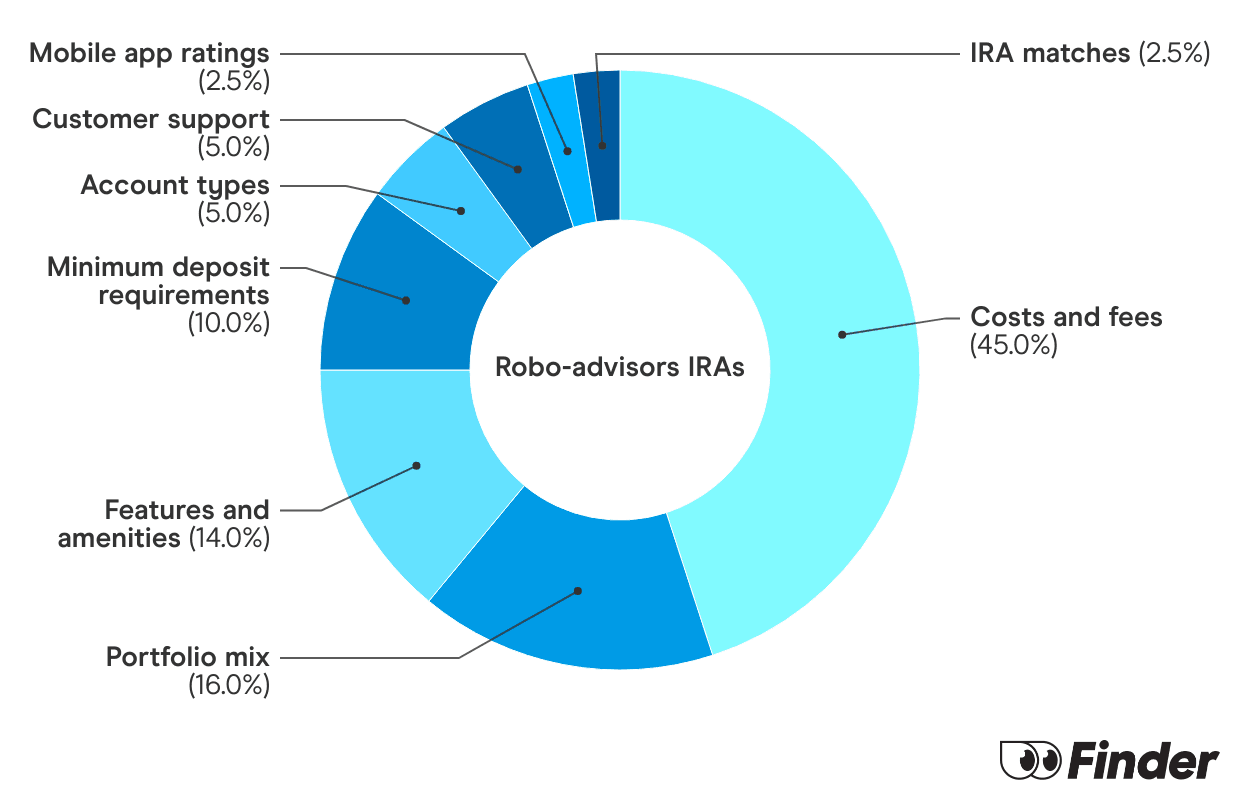Types of retirement savings accounts
The setup of a retirement savings account is similar to a standard savings account as well as a retirement account intended for more complex investment vehicles. What’s different is where you put your money within the retirement savings account, and you usually also get employer benefits and tax advantages in exchange for limitations on how and when you can access your money. Like other deposit accounts, each type of account has its own advantages and disadvantages:
Traditional IRA
Contributions into this account are made with after-tax income but are generally tax-deductible in the year they are made if you meet the income guidelines. Any withdrawals made before age 59 1/2 will be taxed at your income tax rate and subject to a 10% early withdrawal penalty. You won’t be able to add more contributions after age 70 1/2, and you’ll also be required to start taking minimum distributions.
Simple IRA
This account has higher contribution limits than a traditional IRA but can only be opened by a small business owner on behalf of an employee, allowing the employer to match employee contributions. Contributions are made with pre-tax income that’s deducted from payroll, and any withdrawals are subject to the same penalties as a traditional IRA.
SEP IRAs
SEP IRAs are traditional IRAs designed for small business owners and the self-employed with few or no employees. Employers can make contributions to SEP IRAs, which have higher limits than traditional IRAs.
Roth IRA
This account is funded with after-tax income and your earnings will grow tax-free, but your income will determine your eligibility for contributions. You can withdraw original contributions tax and penalty-free at any time, but any earnings withdrawn before age 59 1/2 will be subject to both tax and penalties. If you are within the income limit, you can make contributions at any age and there are no requirements to make withdrawals.
401(k)
This employer-sponsored retirement account allows you to contribute up to $19,500 of your pre-tax income, ($26,000 if you’re over the age of 50) per year. Contributions are deducted from your paycheck and may be matched by your employer. Withdrawals before age 59 1/2 are subject to your current income tax rate and a 10% penalty, and once you reach age 70 1/2, you’ll be required to start making withdrawals.
Retirement savings accounts typically award a higher interest rate than regular savings accounts, as their purpose is to help you save for retirement. Once you’ve reached retirement age or meet any of the withdrawal exceptions, you’ll be able to access money without penalties.
Withdrawal penalty changes due to the coronavirus relief bill
If you, your spouse or dependent tested positive for COVID-19 or are undergoing financial hardships due to reduced hours, a layoff or self-quarantine, you may be eligible to withdraw up to $100,000 from your retirement account without incurring a 10% penalty.
But keep in mind your employer or plan sponsor has to opt in by agreeing to follow the CARES Act provisions. And many aren’t doing that.
Ways to save within a retirement account
Retirement accounts act as a home for your retirement savings, allowing you to place investments and other deposit accounts inside. Once you’ve decided to open a retirement account, you’ll need to think about which products you’ll use to reach your goals:
IRA savings accounts
IRA savings accounts, like the Capital One 360 IRA Savings for example, are just like regular savings accounts but with added tax advantages.
IRA CDs
While you can usually place any normal CD in your IRA, opening an IRA CD may provide better returns in exchange for a longer term length.
Cash management accounts
The WealthFront Cash account and other cash management accounts allow you to manage all of your money in one place and pay interest on your balance.
IRA money market accounts
Unlike savings accounts where your deposits are kept in reserves, your money is placed in low-risk investments like CDs and bonds. In exchange, you’ll usually earn a slightly higher interest rate.
Bonds and bond funds
Bonds are low- to medium-risk investments that pay a fixed return on your money. Purchase individual bonds or diversify your investment with a bond fund, which is made up of multiple bonds.
Money market funds
Money market funds are a type of mutual fund that invests in money market instruments like cash and treasury bills. They are generally considered low-risk but may offer better returns than savings accounts.
Compare retirement savings accounts
Comparing retirement savings accounts is similar to comparing regular bank accounts. Here are a few factors you should consider:

Competitive interest rate

No fees

Account access

Risk

Contributions
Competitive interest rate
A higher interest rate will help your retirement savings work harder, even more so if the interest is compounded daily. However, even with a high interest rate on your retirement savings account, you’ll likely earn better long-term returns with a retirement plan that is actively investing your balance.
No fees
To ensure that every dollar you deposit helps you save for your retirement, you should look for a retirement savings account that doesn’t charge maintenance fees. Keep an eye out for other service charges like overdraft fees, wire transfers that could eat into your balance.
Account access
Given the popularity of online banking, your bank should allow you to access your retirement savings account online or via a mobile banking app. Some institutions offer online tools that allow users to track spending, create budgets and manage their money on the go, helping you reach your goals sooner.
Risk
Consider how much risk you’re willing to take on when choosing an account. A general savings, money market or certificate of deposit account will be far less volatile than an investment account. However, these lower-risk accounts offer lower returns. Keep in mind that deposit accounts are usually covered by FDIC deposit insurance, whereas investment accounts are not.
Contributions
Each type of retirement savings account is funded differently, so it’s important to think about how you’re going to make contributions. You’ll need to consider whether you’re going to open your account alone or through your employer and if you’re going to fund your account with pre- or post-tax income.
Compare retirement account brokers
Compare other products
We currently don't have that product, but here are others to consider:
How we picked theseWhat is the Finder Score?
The Finder Score crunches 147 key metrics we collected directly from 18+ brokers and assessed each provider’s performance based on nine different categories, weighing each metric based on the expertise and insights of Finder’s investment experts. We then scored and ranked each provider to determine the best brokerage accounts.
We update our best picks as products change, disappear or emerge in the market. We also regularly review and revise our selections to ensure our best provider lists reflect the most competitive available.
Read the full Finder Score breakdown
Retirement savings account pros and cons
The pros
- Effective way to save for retirement. You’ll earn higher returns compared to conventional bank accounts. Also, choose how much and how often you’d like to contribute, allowing you to tailor your strategy to your retirement goals.
- Tax advantages. Depending on which type of account you open, retirement savings accounts provide tax benefits that can reduce your taxable income or help your account grow tax-deferred.
- No fees. Most retirement savings accounts do not cost anything to open and there are many options that have easily avoidable monthly fees or none at all.
- Flexibility. With four main options and a handful of other less common retirement savings accounts, there are multiple ways you can set up your retirement savings plan.
The cons
- Contribution limits. Each account has contribution limits that could prevent you from saving as much as you’d like.
- Limited growth. Returns are generally limited to low interest rates, compared to investments and other retirement accounts that may have a higher potential for growth.
- Restricted access. Unlike standard savings accounts, you can’t make withdrawals whenever you need money. With the exception of Roth IRAs, you’ll be penalized if you need to access your money before your retirement.
- Taxable upon withdrawal. Even though contributions may be tax-deferred or tax deductible, your withdrawals will likely be subject to income tax unless withdrawn from a Roth IRA.
- Minimum distributions. Some accounts require you to start making withdrawals once you reach a certain age, even if you’d rather let your money grow in your account.
Tips for using a retirement savings account
Just like any other type of deposit account, there are a few things to watch out for before opening a retirement savings account:
Read the terms and conditions
Make sure you go through the terms and conditions or product disclosure document before signing up for any retirement savings account. The summary page should give you a clear indication of any applicable service fees and charges.
Understand your options
Each retirement savings account is different from the next. It’s important that you understand tax implications, contributions, withdrawal penalties and other factors before deciding which account is right for you.
Learn about taxes and penalties
Research each account to find out about tax implications for contributions, withdrawals and required distributions. It’s also important to be aware of any penalties that may apply if you choose to make an early withdrawal or any situations that might be exempt from penalties.
Speak with a financial advisor
While these retirement savings accounts are much more straightforward than other investment vehicles, it never hurts to get a second opinion. Consider speaking with a financial advisor to determine which account is right for your financial goals and how you can get started on saving.
How much do you have in your retirement account?
How much do you have for retirement?
Response | Contributions | Balance |
|---|---|---|
| Amount | $7,409.56 | $196,192.48 |
The average retirement balance in the US is around $196,192, which is around the figure 20% of survey respondents said they’d need to live comfortably in retirement.
Bottom line
Retirement savings accounts are a steady way to save for retirement and they don’t require investment knowledge or an expensive portfolio manager. These types of accounts offer tax incentives and the potential for higher interest rates, but you’ll pay a hefty penalty if you need to access your money before retirement. Compare your retirement options to find the best account for your situation or explore other retirement plans to start saving for the future.
Image source: Getty images
Paid non-client promotion. Finder does not invest money with providers on this page. If a brand is a referral partner, we're paid when you click or tap through to, open an account with or provide your contact information to the provider. Partnerships are not a recommendation for you to invest with any one company. Learn more about how we make money.
Finder is not an advisor or brokerage service. Information on this page is for educational purposes only and not a recommendation to invest with any one company, trade specific stocks or fund specific investments. All editorial opinions are our own.
Ask a question
More guides on Finder
-
Top IRA Match Accounts for 2025: Boost Your Retirement Today
Get up to a 3% IRA match with Robinhood and Acorns or up to a 1% IRA match with SoFi. See how to qualify here.
-
5 Best SEP IRA Providers of 2025
Explore the pros and cons of the best SEP IRAs and learn how to open one of these accounts.
-
7 Best Rollover IRA Accounts of 2025
Explore the advantages and shortcomings of the best rollover IRAs for beginners, mobile trading, advanced traders and more.
-
Best retirement plans of 2025
Review the best retirement plans in 2025, from employer-offered to individually opened to retirement plans for small business owners.
-
403(b) vs. Roth IRA: How do they compare?
Compare the key differences in contribution limits, tax advantages and investment options between 403(b)s and Roth IRAs.
-
7 types of IRAs: Which is right for you?
Learn about the different types of IRAs and which is right for you.
-
2025’s Top 10 Roth IRAs: Best Picks to Build Your Retirement Savings
Check out our picks of the best Roth IRA accounts for beginners, options traders, hands-off investors and more.
-
10 Best IRA Accounts for 2025: Top Retirement Picks
Check out our picks of the best IRA accounts for beginners, options traders, hands-off investors and more.
-
How to start a solo 401(k)
A retirement plan for self-employed individuals but may come with high administrative fees.
-
Goldco Review 2025: Pros and Cons
Pros and cons to consider before you sign up for a Goldco precious metals IRA.

